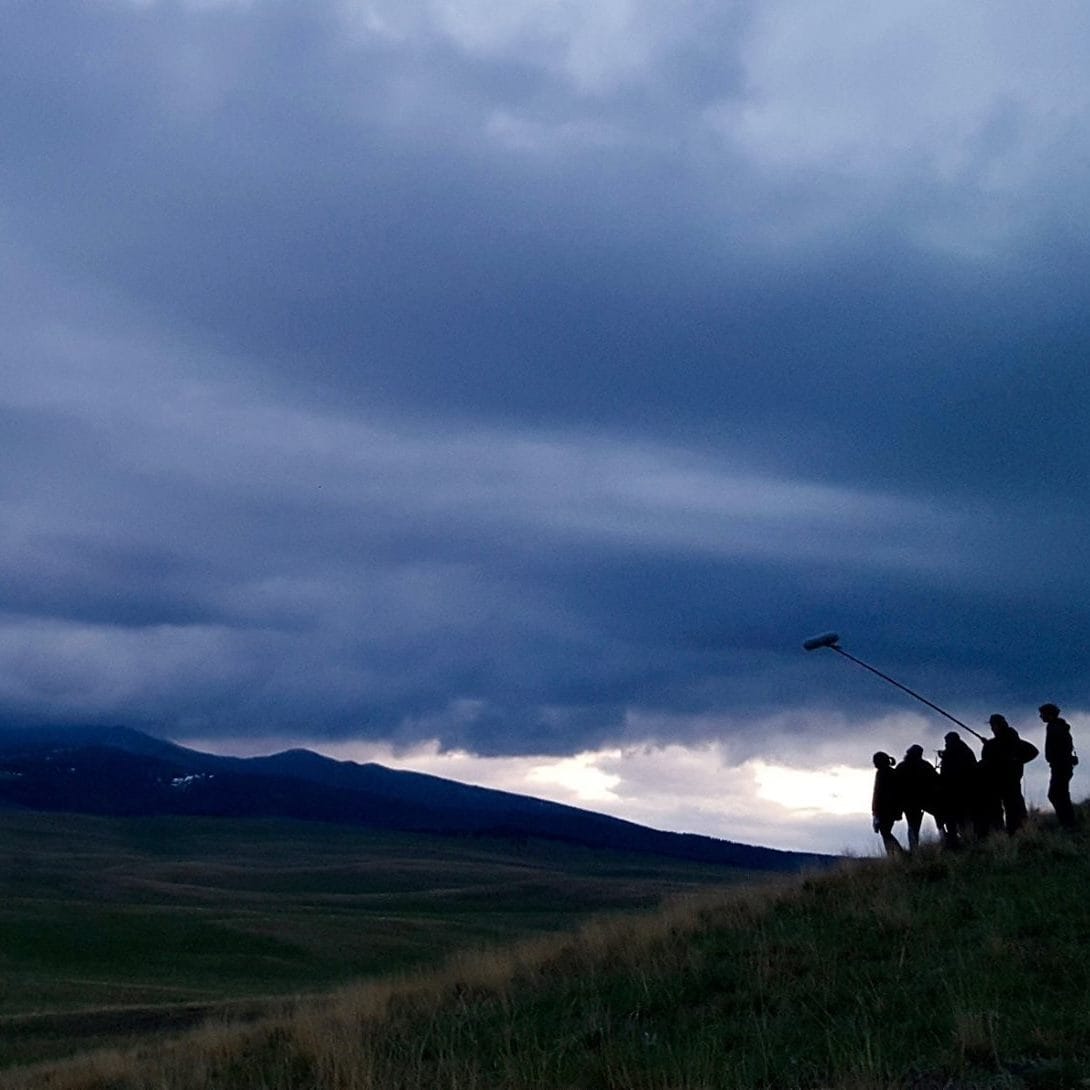Field recording is more than just capturing sound—it’s about preserving an atmosphere, a memory, a movement. A single recording can hold the pulse of a city, the hush of an empty forest, or the unseen rhythms of a machine at work. These textures aren’t just sonic artifacts; they’re the raw material of storytelling.
That philosophy drives our latest packs: Botanic Pads and Aurora Arps. Whether you’re weaving distant echoes into a track or reshaping a sample into something entirely new, field recordings add depth and unpredictability that synthesis alone can’t replicate.
In this blog, we sit down with Minimal Audio sound designer Andrew Pals to explore the art of field recording—his techniques, gear, and creative process. We also dive into the role of recorded sound in synthesis and how to craft textures that feel as real as the world around us.
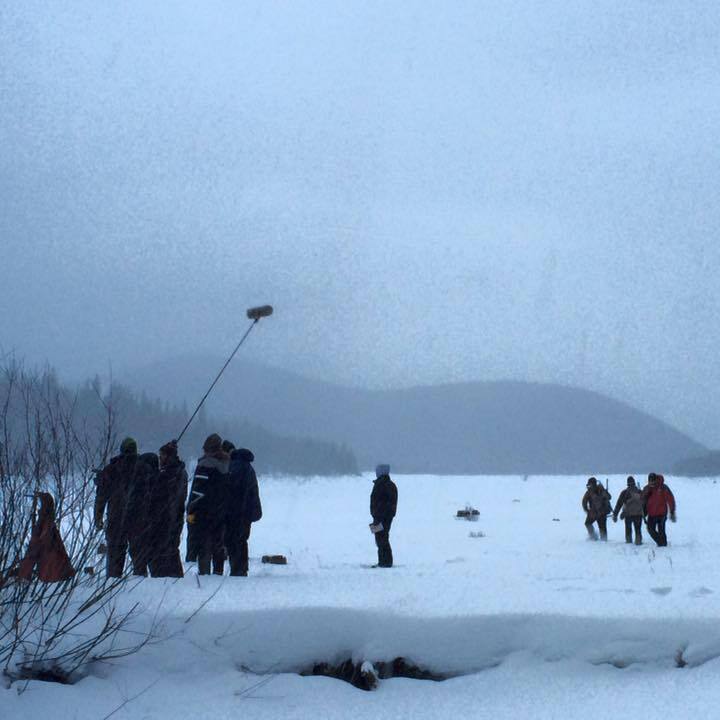
Andrew’s background in field recording & location recording stems from his experience as a Sound Mixer and Sound Designer for film, television, and games. He has worked with various companies such as Discovery Channel, Paramount Network, HBO, PBS, and more.
As a Sound Mixer working in locations amid the mountainous west in Montana, Andrew understands the value of capturing the audible environments of such locations. To achieve natural uninterrupted recordings of a location as to portray the sonic nuances heard and felt in such places.
First, let's talk about field recording. What is it, and what does it mean to you?
I think that Field Recording can be summed up rather simply as ‘capturing audible moments’. It's the actual audible moments themselves that carry the depth of the subject at hand.
For example a sound like a ‘coyote's cry’, this sound is commonly used to portray a feeling of vastness, emptiness, or eeriness. It’s interesting and quite powerful to think that an audible moment/field recording can be used to portray so many different feelings and that it’s sort of generally understood without any preface.
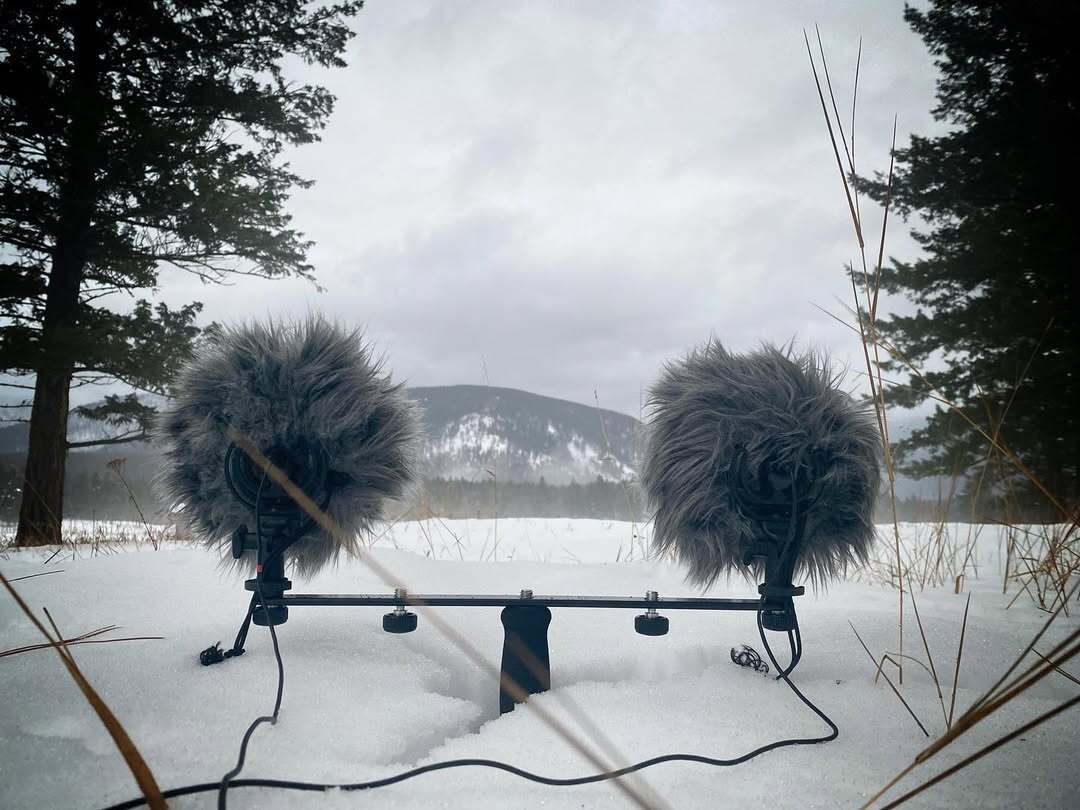
What is the basic setup that someone would need to start field recording? What are some habits/attitudes that you feel make a good field recordist?
To start, I would simply say use what you have; most people these days have a cell phone I reckon, there’s nothing wrong with utilizing these types of devices as they still yield an audio recording. Sometimes perhaps (based on intention) the recording you want could even be better achieved using something like a phone or an old tape recorder.
When it comes to what would be considered a ‘high fidelity recording’ setup - I’d probably start with a Zoom F-3 recorder and maybe some LOM Usi-Pro microphones in an ORTF setup. The Zoom F-3 is very small and preferable due to its portability and high-fidelity capabilities, such as 32-bit recording.
One habit to always incorporate is pressing the record button! haha
Other habits would be to make sure you have batteries to power your recorders and media to write your recordings to; SD cards or External Drives. It’s sometimes helpful to have extras of each, of course depending on the situation.
Make sure to monitor your recordings (but also monitor your chosen field environment- i.e. watch for bears).
For the recordings themselves, it's always good to check your recorder’s settings- sample rate and bit depth. Often times for film sound we will record things with a higher sample rate, to capture ultrasonic frequencies that can be pitched down later and resampled/reworked.
For me, some of the recordings I’m doing are what I call ‘bag drops’ where I leave the recorder and mics in the middle of the forest, for ‘unmanned’ recordings, alleviating the possibility of an audible footstep or breath from myself. So, one thing I’ve applied for this successfully is GPS mapping the particular location, so I can not only return to the location effectively, but also accurately mark where the recording was; i.e. valley, fields, deep forest, etc.
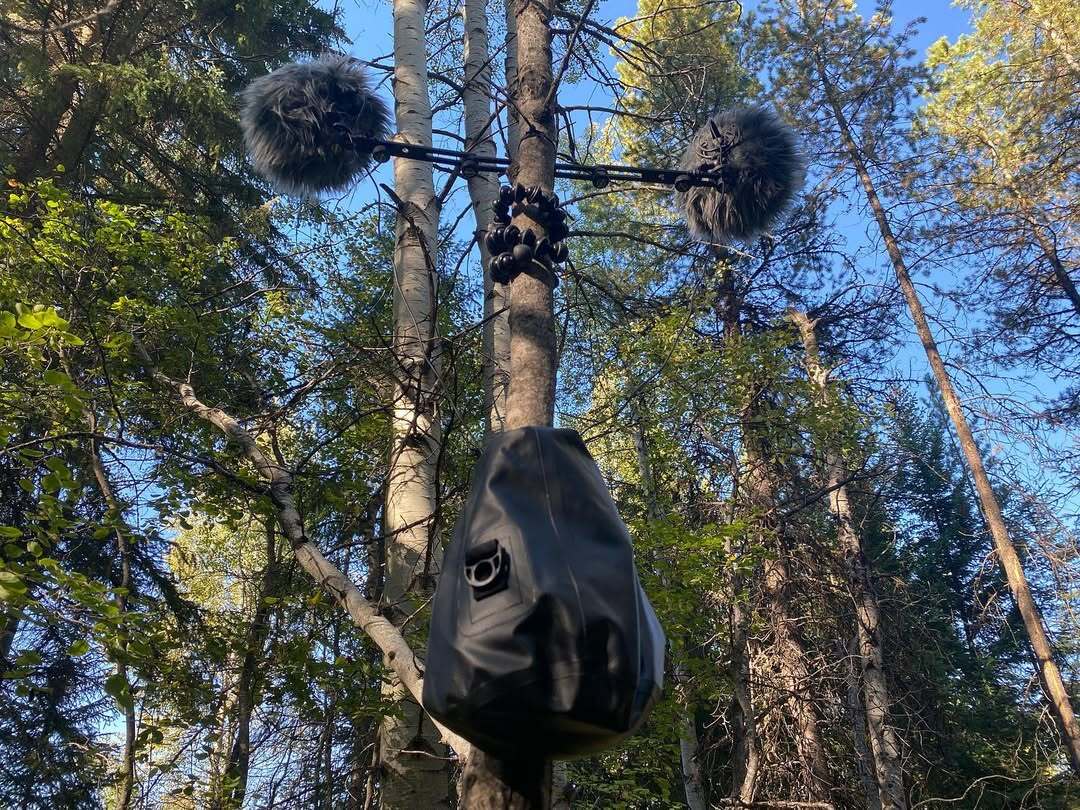
When you’re out there searching for sounds, what are you looking for? What instincts guide you?
This goes in-line with the whole ‘intention’ thing. When ‘searching’ for sounds in the field it’s not a whole lot different than a producer in the studio searching for the ‘right snare’ (lol)- you are setting out with ‘intention’ and based on that intention, you have a certain probability toward sought after results.
In particular for field recording, as it doesn’t happen in a controlled environment or studio (hence the name field recording), it is important to understand that biophony (sounds created by organisms) and geophony (elemental sounds like thunder, wind and rain) each contain natural elements (of sonic randomness) that are beyond human control; I.e. thunderstorm! Bearing this in mind, the ‘wonder’ of field recording is sort of propelled by the unexpected. These bouts of sonic randomness-the unexpected, can exist in the form of the subtlest variations in a hydrophone recording of a trickling stream or from sequences of rolling thunder heard from a distance; the instinct really is to listen.
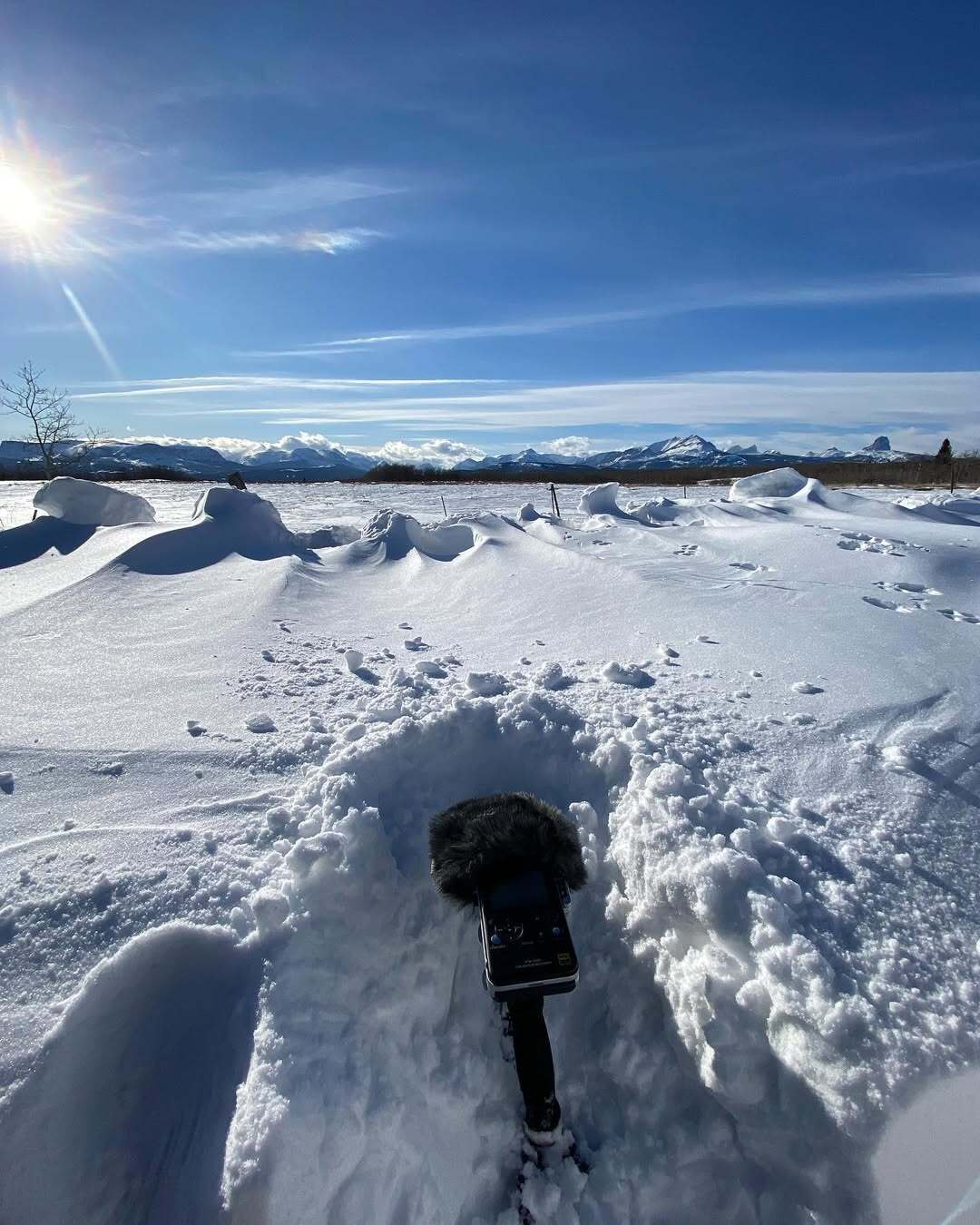
I'd like to move on to talking about the packs we released this month: Aurora Arps, and Botanic Pads.
Both of these packs are very texturally driven. What was the impetus behind that?
For me, I think the idea behind creating texturally driven sounds is to embrace some characteristic randomness within the sound, somewhat parallel to how things might be heard in a more natural setting or even to emulate a sound as it would be heard on a particular device.
For example, the sound of wind rustling tree leaves or dust on vinyl touching the needle of a record player—there are elements of surprise and randomness in how sound exists in the ‘physical world’. We then try to translate some of this conceptually into the digital design or preset itself, using textures (or even modulation) to incorporate small elements of surprise or unpredictability.
This way, when you perform or compose with this sound—say, for a timelapse with clouds or another cinematic scene—the sound will more naturally fit the scene, as both the sound and the scene contain similar nuances of randomness. The idea behind this is to deviate from repetitive or easily recognizable patterns from our aural experience, prioritizing a more organic and naturally interesting presence in the sound, somewhat like how velocity is incorporated into MIDI.
As we explore sounds within our Ambient and LoFi Season, whether it’s creating LoFi tape emulations and pitch warbles through noise in the sampler engine or using an LFO on the filter of some liquid recordings in the granular engine to increase the depth and lushness of a pad, textures are a key part of how I believe producers can create an interesting and unique sound. There’s something truly very special about bringing these textural moments and field recordings into a listening experience, from presets to full tracks.
How do you approach making “Organic” sounds as a sound designer?
When approaching Organic Sounds or even any sounds really, I’m sort of looking at things ‘from the ground up’- for starters orienting around ‘intention’. In this case applying ‘organic’ as the stated intention, your sound design session is much more likely to naturally yield organic sound, than it would if you set off with “futuristic” as your intention.
Something as simple as intention - can be hugely beneficial toward creative goals. Field recording itself can literally be approached ‘from the ground up’- I mean this truly; as sound changes its phase by 180 degrees as it reflects off of the ground. This is important to factor into field recording practice, as mic height can allow some control over what sound is actually captured; it’s one manual way to try and attenuate ‘unwanted sound’ like traffic noise from recordings.
All puns aside, I think setting out on a sound design session with intention at the core of your explorations is how to more naturally achieve successful designs. I think when applying intention, mixed with a hint of some of the characteristic randomness (as described above; I.e. leaves in the wind), our resulting sounds already seem like they would resonate in such an organic theme.
Beyond that, when more deeply in the actual realm of synthesis, I would say that my attention for organic sounds typically is after certain timbres that are likely in the more lush frequency space- accompanied by some nice tonal layers from the granular engine. Thematically the organic ‘intention’ can be applied further even into the modulation, say using a liquid sound in the granular engine and utilizing a follower mod with its input set to the ‘granular-post’, this way when the liquid sound’s level increases- it affects the chosen parameter based on the granular’s post output level.
Using the follower mod to create organic pads in Current
When you were creating these packs, what were the aspects of nature that inspired you the most?
Crystalline sounds have a unique allure, like the harmony of ice crystals in a serene forest. There’s a really nice aspect to these higher frequency ‘trickles’ that fits well into ambient. 'Evolving' sound is key, similar to how the sun moves, altering light and shadow throughout the day. This concept translates into music through filtering, layering, modulation, and effects like phasers or frequency shifters.
Did creating these packs inform your sound design process?
Every pack we release (at least 2 a month!) at Minimal Audio is truly an epic new sound design journey. I’m always excited to be working so closely with master sound designer Nathan Wexler, but also we are in touch with some of the most creative and talented people on the planet—being in such good company keeps us inspired and the bar raised toward making the best sounds we can for all our users.
Our end goal is to inspire. Nate and I both (along with a lot of the MA crew), are pretty big fans of ambient and lofi sounds, so we are genuinely always on some level of an active search for new ways to make sounds and implement different techniques. Luckily, for exploration sake, there is always something new to learn in sound!
If you had to pick one preset out of each pack; which would you choose?
My ‘desert island’ picks for presets would be:
Botanic Pads: ‘Acid Drops–It’s just so lush ya can’t leave home without it.
Aurora Arps: ‘Falling Aurora'–This one just sort of sounds like the name!
There you have it folks! I wanted to give a special thank you to Andrew for taking the time to sit down with us. If you're interested in checking out our latest packs you can find them here. If you're interested in exploring more of our ambient season, check out our blog on Øneheart here. For everything else make sure to lock in with us so you don't miss out on all of our latest updates. Until next time–Keep creating!


